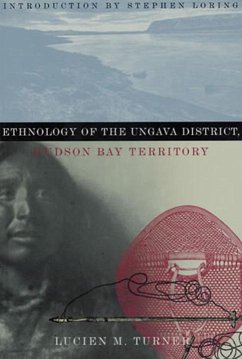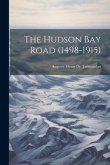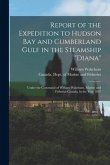Lucien Turner arrived at the present-day community of Kuujjuaq on the northern Quebec-Labrador peninsula in 1882. As with his earlier long-term appointments in Alaska, he primarily conducted meteorological, atmospheric, and tidal observations for the U.S. Army's Signal Corps. But he also developed a meaningful rapport with the Innu and Inuit, spending his free time studying and recording not only their material culture—including clothing, dwellings, weapons, and tools—but also their lifeways, language, and stories. His images of these people and their camps are among the earliest examples of photography of the Arctic. As Stephen Loring Notes in the introduction, "With few exceptions—Inuit shamanistic paraphernalia and Innu hunting charms—the majority of the materials Turner collected were artifacts and clothing used in day-to-day activities. The passage of time and the miracle of conservation have transformed these ethnographic minutiae, these objects and materials of relatively minor significance on the past, into treasured cultural icons." Especially notable for Lucien Turner's descriptions of nineteenth-century Native material culture, Ethnology of the Ungava District, Hudson Bay Territory was originally published in 1894 as part of the Smithsonian's Annual Report of the Bureau of American Ethnology series—often considered to mark the beginning of American anthropological studies. This reissue ensures that Turner's work continues to be a classic introduction to the culture of the Innu and Inuit people of northern Quebec and Labrador.
Hinweis: Dieser Artikel kann nur an eine deutsche Lieferadresse ausgeliefert werden.
Hinweis: Dieser Artikel kann nur an eine deutsche Lieferadresse ausgeliefert werden.


![Ethnology of the Ungava Bay District, Hudson Bay Territory [microform] Ethnology of the Ungava Bay District, Hudson Bay Territory [microform]](https://bilder.buecher.de/produkte/65/65531/65531145m.jpg)



![Across the Sub-Arctics of Canada [microform]: a Journey of 3, 200 Miles by Canoe and Snow-shoe Through the Hudson Bay Region Across the Sub-Arctics of Canada [microform]: a Journey of 3, 200 Miles by Canoe and Snow-shoe Through the Hudson Bay Region](https://bilder.buecher.de/produkte/66/66184/66184045m.jpg)
![The Honorable Hudson Bay Company [microform] The Honorable Hudson Bay Company [microform]](https://bilder.buecher.de/produkte/64/64521/64521662m.jpg)
![Notes of a Twenty-five Years' Service in the Hudson's Bay Territory [microform] Notes of a Twenty-five Years' Service in the Hudson's Bay Territory [microform]](https://bilder.buecher.de/produkte/65/65579/65579845m.jpg)